The Greyhound
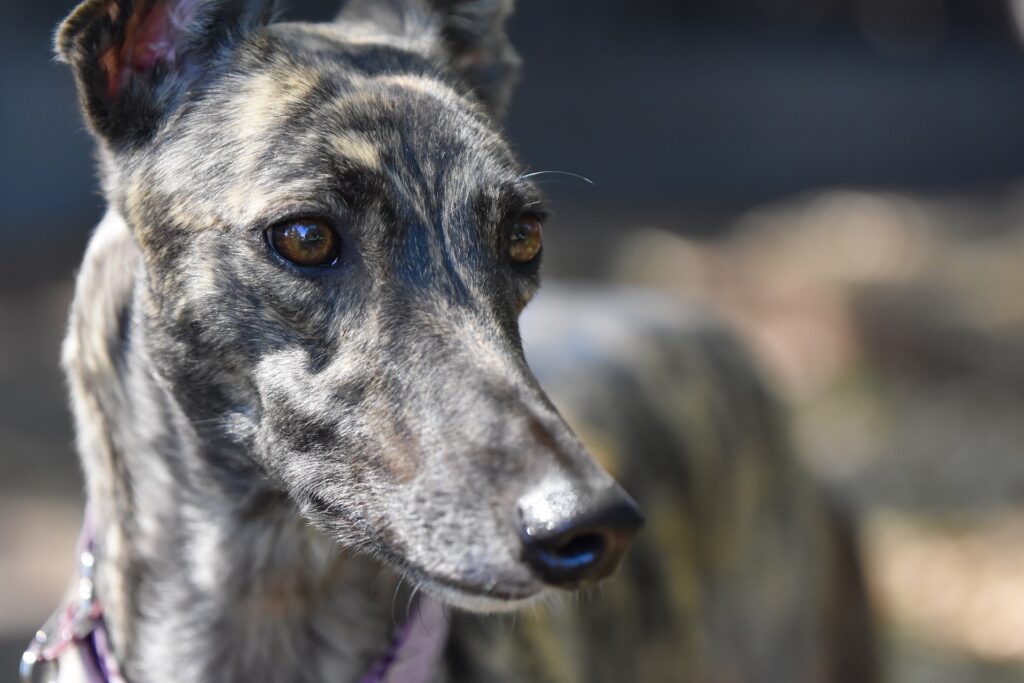

You may not know, but April is the National Adopt-A-Greyhound month. This month, for our “Dog Of The Month” series, we have chosen to write about the Greyhound, a beautiful and gracious dog that we are sure you will love to read about.
Jump To Any Section You Would Like To Read
A Brief Introduction
The Greyhound is a dog from the hound dog group that was originally bred to hunt fast prey such as hares, deer or foxes for example. Incredibly fast, the Greyhound’s top speed when running can reach 45mph, which is why they are so popular in dog races. Often seen as a very energetic dog due to its racing history, the Greyhound is actually a very calm, gentle and kind soul that loves to be surrounded by family. The Greyhound is often found in rescue centers or shelters as a lot of them end up abandoned once they are retired from racing. So if you would love to get a Greyhound, we recommend you check nearby shelters to give a loving home to an adult Greyhound.
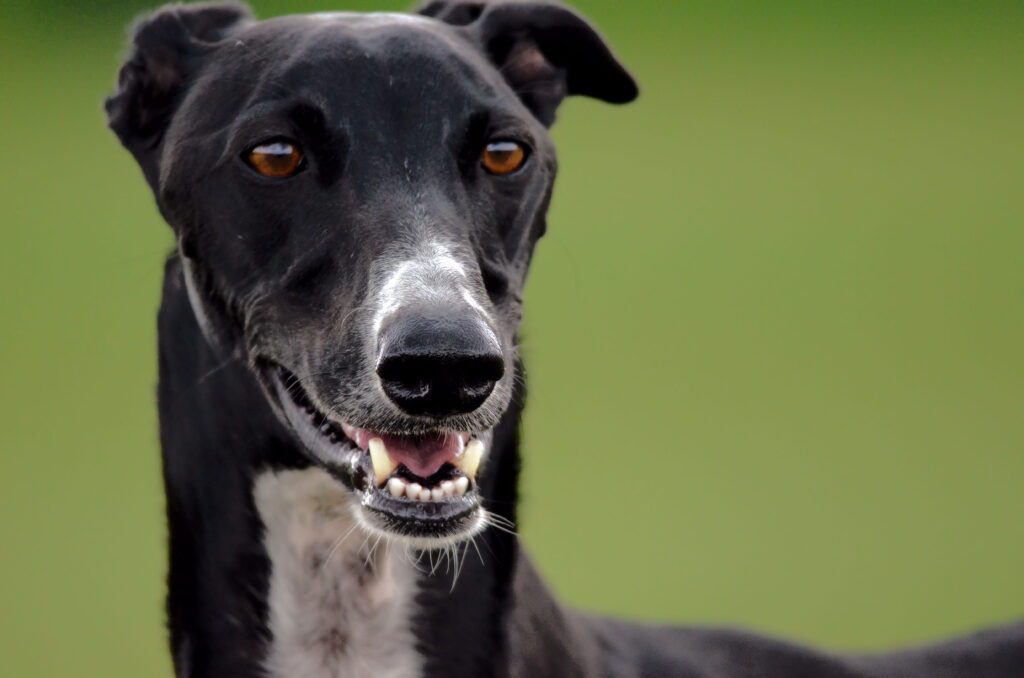

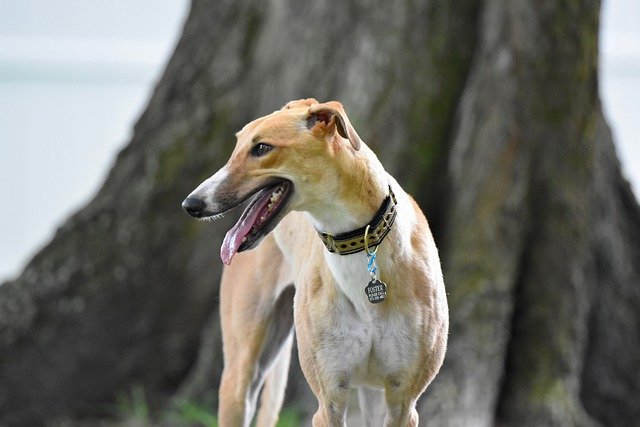

Where Does The Greyhound Come From?
It is believed that the origins of the Greyhound lay in the Middle East and North Africa, about 4000 years ago. The ancestor of the Greyhound is believed to have been introduced in Europe between 500AD and 1000AD. The Greyhound was admired by many civilisations, including the Greeks, the Egyptians, and the Romans. It is believed that the Greeks already organised dog races during the Classical Age. The Greyhound then became very popular throughout Europe during the Middle Ages, in particular among Royal Families. The Greyhound as we know it nowadays is considered to be an English breed, as it has been present and bred in England for many years now.
What Are The Physical Characteristics Of The Greyhound?
The Greyhound is a very gracious, sleek and slim looking dog. Although they are medium-sized dogs, their body is very long, skinny, making them look rather tall and majestic. They have hardly any fat and a lot of muscles. This explains why the Greyhound is such a good racing dog, as their body is very athletic. Their coat is usually short, with fine short hair, and the most common colours for their coat are black, white, grey, red, fawn and brindle. On average, a female Greyhound measures between 68 and 71cm and weighs between 26 and 30kg. A male Greyhound measures between 71 and 76cm and weighs between 30 and 32kg.
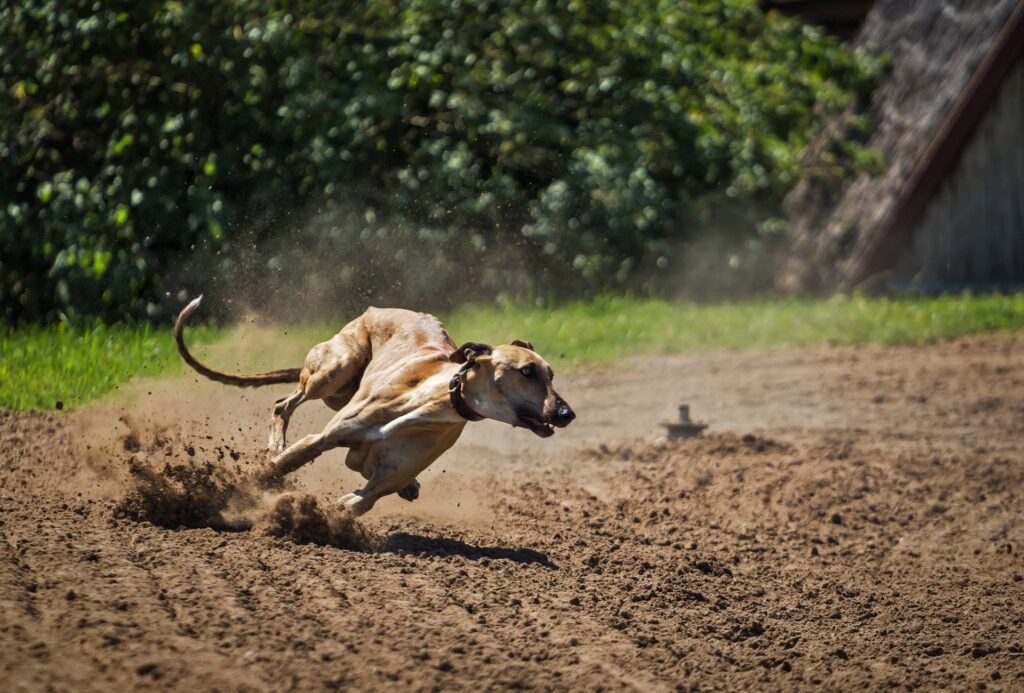

What Is Their Personality Like?
The Greyhound is known to have many great qualities. They are very sweet and sensitive. They need a lot of love and adore being surrounded by their family, therefore they can easily feel lonely. This is why they shouldn’t be left alone for a long period of time.
They require a lot of attention and care. If you are looking for a nice family dog, the Greyhound is the perfect pick. They love and are devoted to their family. They are very friendly to kids, strangers and other dogs, but they will still let you know if a stranger is approaching your house. They hardly ever bark unless there is a good reason for it.
Most dogs can adapt to apartment life if taken out enough every day. Considering the fact that the Greyhound is a calm dog, they can adapt to apartment life easily. Just bare in mind that they will need to be taken on walks a few times a day. A Greyhound, just like any dog, is a real commitment that requires a good amount of attention and care each day. Just like every other breed, it is recommended to train them and socialise them from a very young age so they are used to people and other animals. It’s also important to get them used to different situations and sounds from a young age. If you have a home with a garden, a secure fence is required as they love to chase small prey animals.
People tend to believe Greyhounds have a great deal of energy as they are known to be racing dogs, but the truth is that they actually don’t have a high energy level. Of course, this can change from one dog to another, but most Greyhounds are actually described by their owners as “couch potatoes.” Even if they don’t need to run miles and miles on a daily basis, they still need a daily walk and a bit of exercise (just like any dog) otherwise they could become bored. Becoming bored can happen to any dog breed and impact a dog’s life in many ways. A bored dog could become destructive and cause troubles around your house. When making them run outside, make sure the place is safe and enclosed so your dog doesn’t run away.
To sum it up, the Greyhound is a very attaching and intelligent dog who will love you as much as you will love them, and if you are considering getting one, then you should definitely go for it as you won’t regret it.
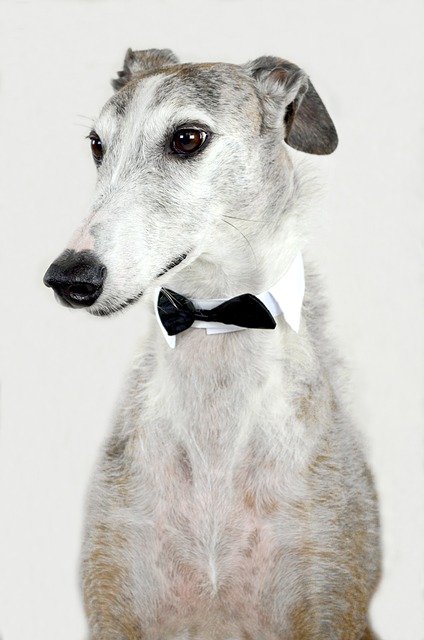



How To Take Proper Care Of The Greyhound?
Nutrition:
Dogs are canines and descendants of wolves. Most people believe that this makes them carnivores, but dogs, just like wolves, are in fact omnivores that require both meat and plants in their diet.
A dog’s stomach in general is not designed to digest carbohydrates. Carbohydrates are a type of nutrient found in certain foods. While dogs should not be eating too many carbs, they are fine in small quantities. They are actually often found in dog dry food. It is important that your dog is fed a balanced diet. We recommend you should speak to your veterinarian if you have any questions or concerns for your dog’s diet.
Puppies and dogs under 1 years old usually require a special diet designed just for them so they can grow healthy and strong. Again, always ask your veterinarian what are the best options for your puppy if you have any doubt.
The main foods to avoid when feeding your dog are:
- Any food that contains Xylitol, which is an artificial sweetener that can cause liver failure, brain damage or seizures in your dog.
- Chocolate, coffee and caffeine in general as they contain methylxanthines which are very harmful for your dog.
- Avocados are to avoid as they are very poisonous to dogs. They contain Persin which can cause severe vomiting and diarrhoea.
- Onion, garlic and chives in all shapes. They are very irritating to a dog’s digestive system.
- Citrus are to be avoided as they usually contain a high amount of citric acid which can be very irritating for your dog’s bowels.
- Grapes and raisins, which can be very toxic for your four-legged friend and cause them to have kidney failure.
- Any food that contains a lot of salt, as it can cause uncontrollable thirst as well as sodium ion poisoning.
- Nuts are to be avoided, as they contain too much fats and oils. Macadamia nuts in particular should be avoided as they contain a toxin that can affect the muscles and the nervous system of your dog.
- Alcohol should never be given to your dog as it can cause extreme liver and brain damage. Even the smallest amount can be devastating for your pet.
You can choose to put your Greyhound on a raw diet or on a dry food diet for more convenience. Both have pros and cons and again, we recommend you talk about this with your veterinarian to find what’s best for you and your dog. You can find dry dog food specially built for the needs of the Greyhound, from many different brands. It is important to remember that all dogs are different and can have different conditions. One food that might be fine for one dog might not be fine for another.
How often to feed my dog?
Puppies should be fed 3 to 4 times a day. But this can vary depending on how many calories your dog burns a day. Puppy Greyhounds tend to be quite active and might need to be fed 4 to 5 times a day.
Adult dogs should be fed 1 to 2 times a day depending on their energy level and their size. Certain brands of dry dog food will give a guide at the back of the bag, but you might need to adjust the amount as all dogs are different and some burn more energy than others and therefore need to eat more than others. We recommend you talk to your veterinarian to figure out the perfect amount to feed your dog on a daily basis. Use a measuring cup or a jug to make sure you always give them the right amount of food. We recommend you elevate your Greyhound’s bowls so they don’t have to lean too much when eating or drinking.
It is important for dogs to have scheduled meals. Choose the right time for them to eat each meal, and keep the same pattern each day. Do not feed them just before exercise. All dogs can suffer from bloating if exercising after eating, but the Greyhound is particularly sensitive to this.
When it comes to treats, we recommend you to use healthy treats as much as possible such as carrots, bananas or green beans. You can also ask your veterinarian or your local pet shop to recommend you the best dog treats adapted for your dog.
Grooming:
It is safe to say that the Greyhound is a fairly easy dog to groom. They have quite short hair that doesn’t shed much. We recommend you brush them once a week and get their nails trimmed approximately once a month. Dental care is very important in dogs and so you should brush your dog’s teeth two to three times a week to avoid plaque buildup and other dental problems. You can find dogs’ toothpaste at your vet or in pet shops. They do not require daily baths. A bath every two months will be more than enough. and we recommend you use a shampoo adapted for dogs.
If you notice that your dog does not smell nice although you take good care of them, talk about it to your veterinarian. Bad smell in dogs does not necessarily mean that the dog is not clean. It can be caused by health issues such as dental problems, skin inflammation caused by allergies, gas, ear infections, or even an issue with their anal sacs.
Physical Activity:
Even if the Greyhound can be described as a “couch potato”, they still require a good amount of exercise, just like any dog. The Greyhound requires at least one hour of exercise a day to burn off their energy. To make them exercise, letting them run in your garden or in a secure park is a good idea, or a long walk is also good. They need at least one nice daily walk, plus extra time outside to do their business. If you live in an apartment, we recommend you take your dog on at least two to three short walks a day and one long walk where they can burn off the energy. You don’t need to make them run every day but we recommend you do it at least a few times a week. If you live in a house, you can of course use your garden to make them exercise, but they still will need to spend some time outside the house to not become too bored and socialise with other dogs and people.
Greyhounds can be quite sensitive to extreme weather and overheat easily as their body does not have much fat or fur to protect them. They are also prone to sunburn. On hot days, we recommend you walk and exercise your dog in the morning and at night to protect them from the heat and sun.
Wait at least one hour after eating to make your dog run. Just like most dogs, Greyhounds can bloat and so it is important to give them enough time to rest after eating.
Training:
Most people believe that dog training is only necessary for large dogs and breeds that have a bad reputation. It’s actually really wrong. Dog training is important for every single dog and every single breed. Any dog, even the smallest one, can be a lot of trouble if not trained properly.
It is very important to train and socialise your Greyhound from a young age or from the first day they join your family. They can be quite shy and timid and this is why it is recommended to get them used to different people, dogs, animals, places and sounds from the beginning, or they could end up feeling stressed the day they are put in these situations.
You should get your Greyhound obedience training as well so they listen to you in any situation. Training can be done by you if you feel like you have the skills, patience and time to do it, or it can be done by a professional dog trainer. The Greyhound is a very intelligent dog, so quite easy to train. Obedience training is highly important so your dog listens to you at all times. Always use positive reinforcement with your dog. The Greyhound is a sensitive dog and should never be yelled at or punished. Positive reinforcement is key to building trust. If your dog doesn’t trust you, they will not listen to you.
Making Them Feel Comfortable In Your Home:
We all love to feel comfortable in our home, and when you get a dog, your home also becomes their home. Making them feel comfortable in your home is a huge part of their happiness. They need to feel welcomed, loved and safe.
We recommend having a large crate for your Greyhound so they have a space in the house that is just theirs and where they can feel safe and relax peacefully. Find them a quiet corner in the house so they are not bothered by people walking by when they are trying to rest, but do not isolate them too much as they like to have their family around them and can easily feel lonely.
When it comes to eating, they require a quiet spot to eat. You should also get them some raised bowls so they don’t have to lean too much to eat or drink. Stainless steel bowls are the best option for dogs as they are easy to clean, more hygienic and resistant. Plastic bowls should be avoided as bacteria can easily get into scratches, and ceramic bowls can be quite dangerous if they happen to break. If your dog eats too fast, you can buy slow feed bowls which are meant to make it harder for your dog to get the food out the bowl, and so make them eat slower.
As mentioned before, the Greyhound is quite sensitive to extreme weather, whether it’s hot temperatures or cold temperatures. You should consider getting them a jacket or raincoat for the winter, to wear while outside.


What are the most recurrent health conditions in the Greyhound?
The Greyhound is a generally healthy dog. But just like other breeds, there are several health conditions that are more common in the Greyhound as they are usually genetically inherited. This does not mean that your dog will one day have any of these conditions.
The most common health problems in Greyhounds are the following:
- Anesthesia Sensitivity: the Greyhound is actually the only breed that is proven to be sensitive to particular anesthetic drugs, and they have a prolonged recovery following anesthesia.
- Hypothyroidism and autoimmune thyroiditis: autoimmune thyroiditis occurs when the immune system of the dog attacks the thyroid gland. Hypothyroidism occurs when having low levels of thyroid hormone.
- Osteosarcoma: also known as bone cancer, this is the most common cancer in dogs. This cancer gradually weakens your dog’s bones by eating the bones’ tissues away.
- Gastric Torsion and Bloat: this is a life-threatening condition that causes your dog’s stomach to fill with gases and rotate, cutting off blood circulation.
These are the most common problems your Greyhound could encounter, but it does not necessarily mean they will. Keeping your dog healthy and taking good care of it will help prevent these conditions.
We recommend you visit your veterinarian every 6 months for a full check-up, even if your dog is perfectly healthy. Always follow their vaccine schedule, as well as external and internal worming. You should also consider getting your dog neutered, as it can have great benefits for your dog such as reducing the risk of cancer, uterine infections, prostate disease, and many more.
If you notice any change in our dog’s behaviour like an excessive sleep, a loss of appetite, diarrhoea, frequent vomiting, difficulty in breathing, limping, or anything that appears abnormal to you, we recommend you visit your veterinarian as soon as possible.
The Greyhound’s life expectancy varies from 12 to 15 years.
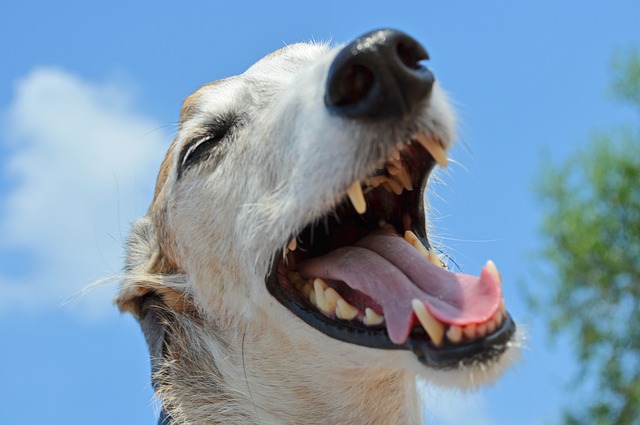

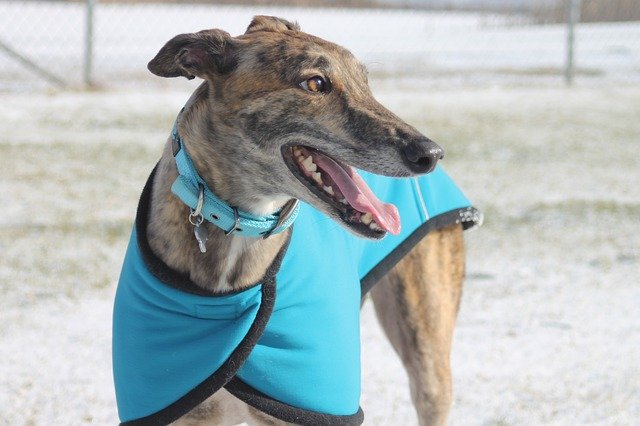



The Greyhound is an amazing dog, full of love and kindness. Because of dog racing, you can find many retired racing Greyhounds in shelters and rescues homes. They will make a great companion for a single person, or an amazing family dog for a larger family. Most Greyhounds are well behaved, easy to train, and quite laid-back. If you think the Greyhound is the right dog for you and would like to adopt one, think about checking your local shelters as there are many adult dogs waiting for a new family to adopt them and give them their forever home.
